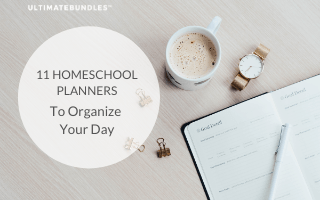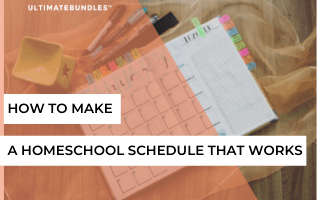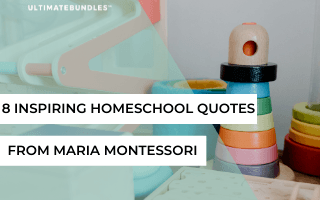Between the increasing demands placed on kindergarten students in public schools and the ever-present dangers of our modern world, an increasing number of parents are opting to homeschool their children. In fact, close to 10 percent of parents made the choice to homeschool their children in 2020.
If your child is about to start kindergarten and you’ve never homeschooled before, you may wonder what homeschool for kindergarten kids should even look like. You may not know what to teach or how to structure your homeschool schedule, and that’s okay! Homeschool for kindergarten looks very different in every household. However, you can use these five tips to help you out.
Establish Routines Early
Children thrive when routines and structure exist. They need consistency to succeed, especially in the context of their education. For this reason, you should absolutely establish routines early in the homeschool year.
When you start making plans and researching how to homeschool for kindergarten children, look for ideas on how to map out your daily and weekly homeschool schedule. Keep in mind that kindergarten-aged children can usually only focus on a single task for 15 minutes at the most, so you’ll need to include lots of transitions and plan to keep the time you spend on each subject area fairly short. This type of schedule will help your child stay engaged and also help them know what to expect next.
Routines don’t just include an overarching schedule, though. They also include small parts of the day as well. These routines may include activity structures, directions on how to ask or answer questions, or even what your child should do if they are thirsty during instructional time. Establishing all of these little routines early will help your child succeed and help you maintain your sanity too.
Read, Read, Read
Early reading skills are a critical part of the kindergarten curriculum. As the year progresses, your child will grow as an independent reader as he grows more confident in his literacy skills.
As you plan out your homeschool for kindergarten curriculum, be sure to include lots of opportunities for early literacy skills, such as letter identification, sound matching, and book skills like reading from left to right and turning pages. You should also build in time for joint and independent reading, especially as you get later into the year.
Furthermore, reading provides a great opportunity to cover multiple subject areas at once. By selecting nonfiction books to read, you expose your child to science, history, and the arts while also helping develop literacy skills.
When selecting kindergarten homeschool reading material, consider using a mixture of texts your children can accurately read themselves, as well as some more challenging texts that you can read to them. Also, don’t forget to pre-teach high frequency words and phonics patterns so your child can apply those skills when reading books or other texts out loud or silently.
Schedule in Plenty of Playtime
Believe it or not, kindergarten children learn through play. This can include unstructured playtime, like running around on an outdoor playground, or structured play, which is typically instructor-led. Both methods help learning occur and provide kids with some fun along the way.
Playtime allows young children to think creatively, practice problem-solving skills, and explore the world around them in new and different ways. In many cases, playtime provides a solid foundation for social-emotional learning to occur—which helps children practice empathy, collaboration, and communication skills. Dramatic play activities can also give your child the opportunity to apply new knowledge in a practical, real-world scenario. This helps the knowledge become more transferrable and “stick” in long-term memory.
Outdoor playtime also helps ensure your child gets plenty of physical activity in their homeschool day. This outdoor playtime gives children an opportunity to further develop their gross and fine motor skills while strengthening their muscles. Outdoor play also helps children foster a sense of independence, and the physical activity helps their body produce much-needed chemicals to boost the immune system and brain activity.
Don’t Shy Away from Technology
Although most parents are aware of the problems with excessive screen time, technology isn’t always a bad thing. In fact, technology can really enhance the overall experience when you homeschool for kindergarten.
Technology allows you and your child to explore parts of the world that may not be accessible through an in-person field trip. You can travel around the world, watch videos about animals that may not live in your backyard, or even connect with other homeschool families to study together.
Furthermore, technology can help your child work on their fine motor skills and computer literacy, which are both important for our modern world. Kids need to know how to type, complete a web search, and even tap on a tablet screen as these are all critical components of most modern jobs.
Stay Flexible
No matter what schedule you follow or how much you spend on a year-long curriculum for your child, the most important thing you’ll need when you homeschool for kindergarten is flexibility. Every child learns differently and every family’s daily schedule looks different, so don’t sweat it if your homeschooling day doesn’t mirror a friend’s.
You should also allow for flexibility for your child’s sake. Young children are curious and naturally love to learn more about topics that interest them, so don’t be afraid to spend an extra 30 minutes reading about the solar system if you find that your child enjoys it more than working through addition facts. Homeschooling allows you the freedom to explore topics in more than one way, and you should cherish that time with your child.
Don’t be afraid to try flexible learning spaces too or take your kid “out of the classroom” for experiential learning opportunities either. Homeschool settings are the perfect way to give your child real-world examples of the curriculum, and kids love going on field trips or short adventures. As long as your child is learning, anything can go.
Final Thoughts
Homeschool for kindergarten kids can look drastically different than what most traditional classrooms look like—which makes it all the better. These five tips can help you make the most out of your homeschool year and help you have a great time along the way.



